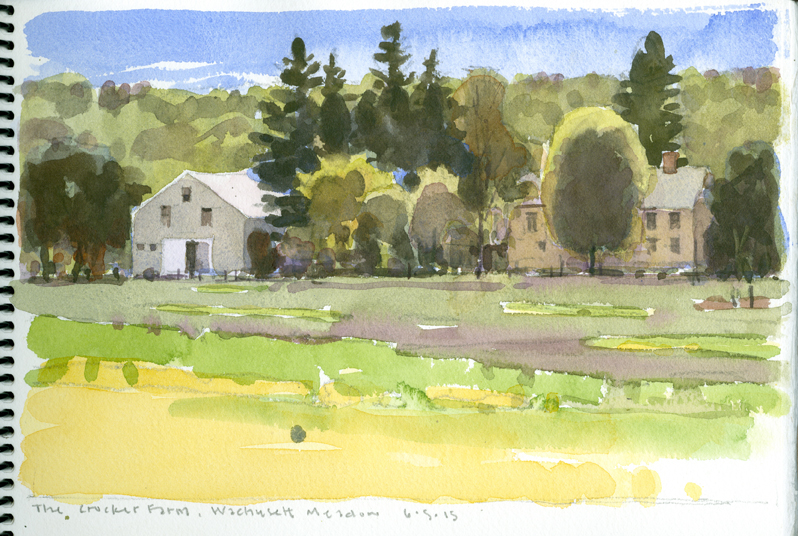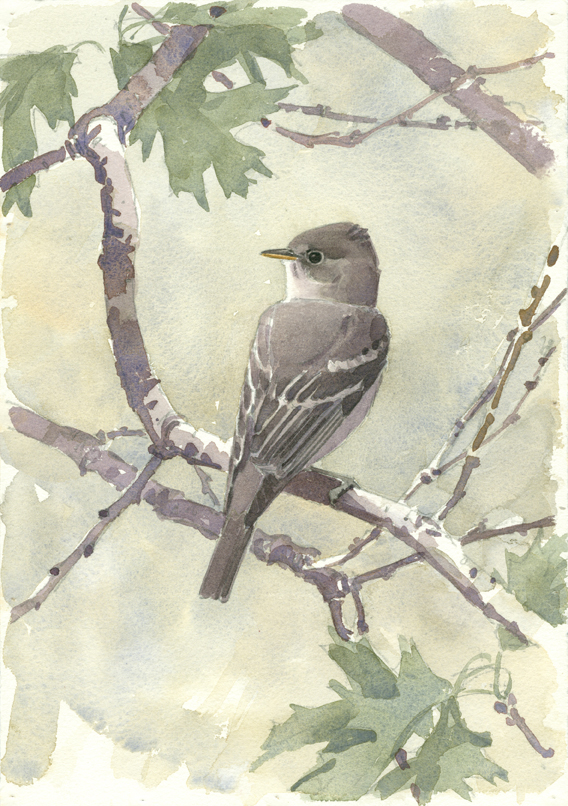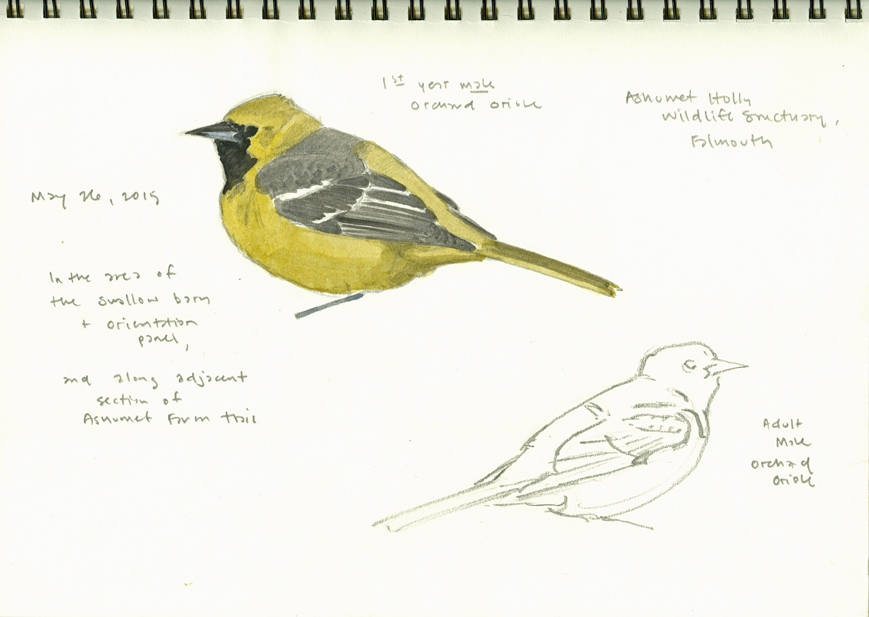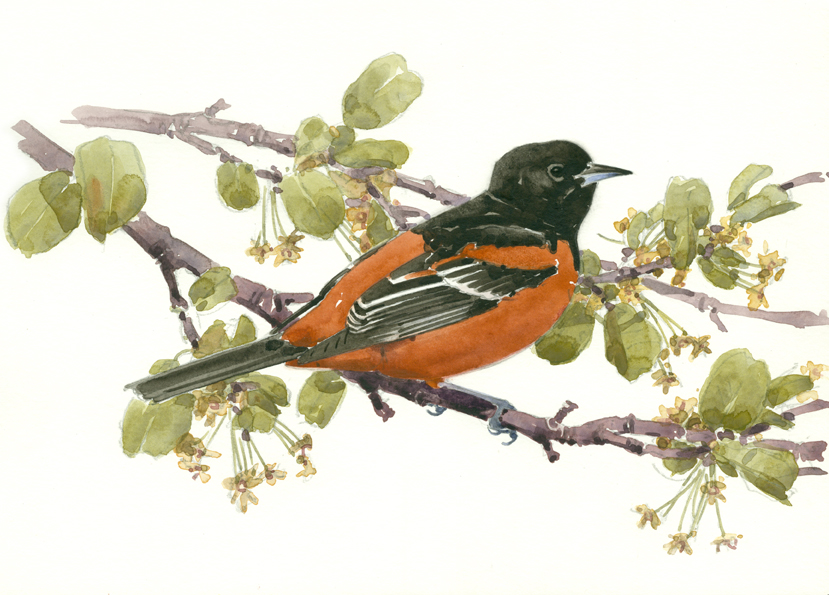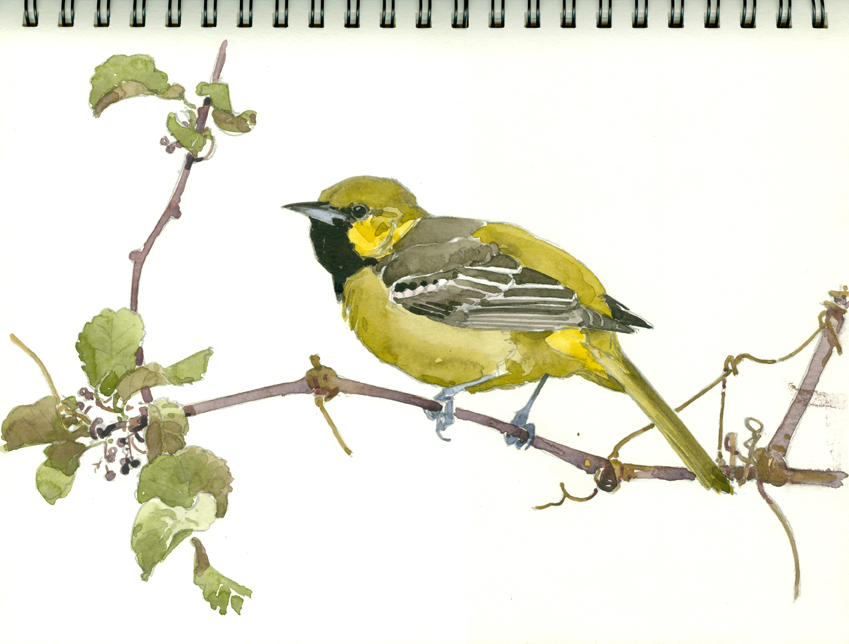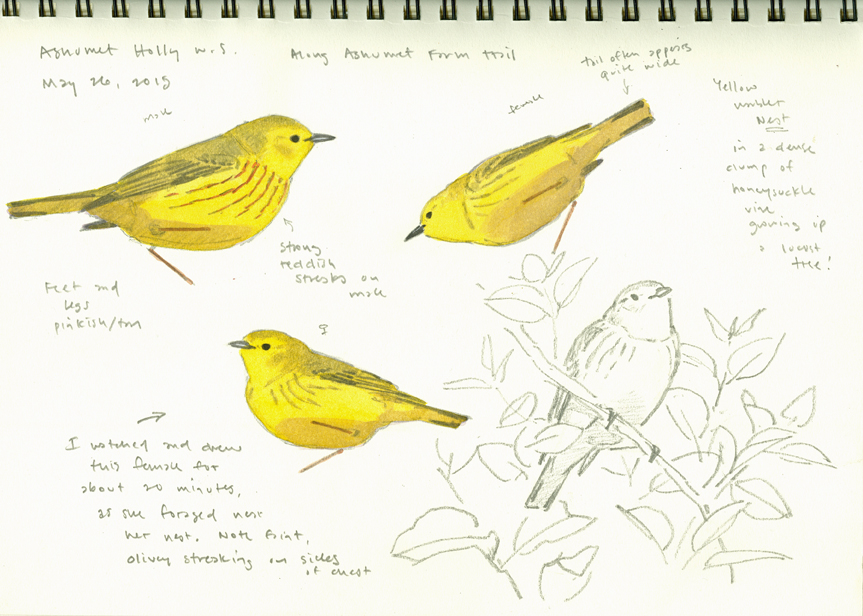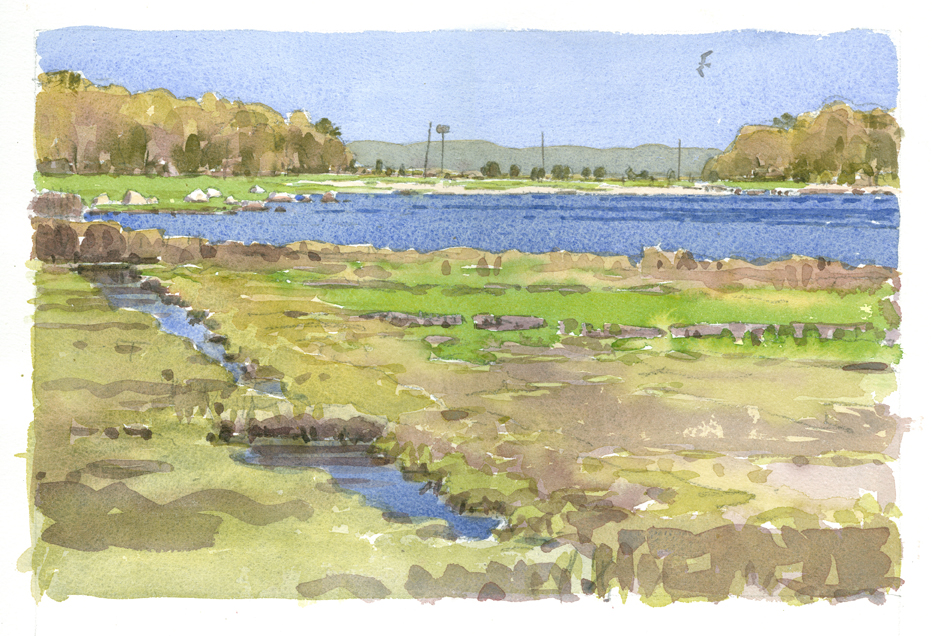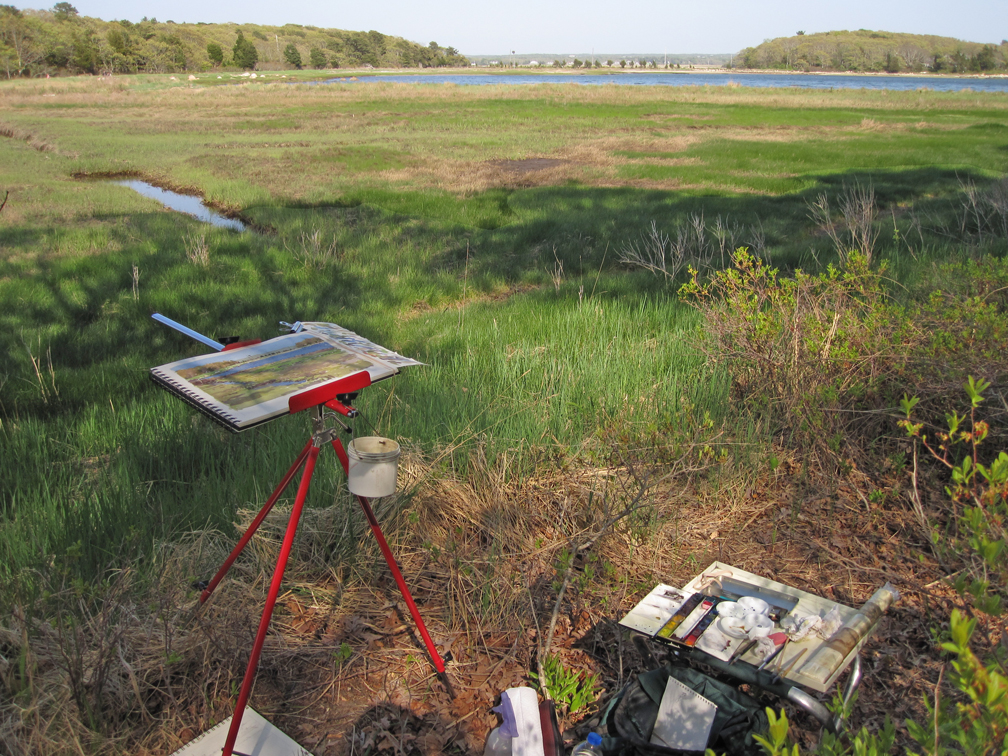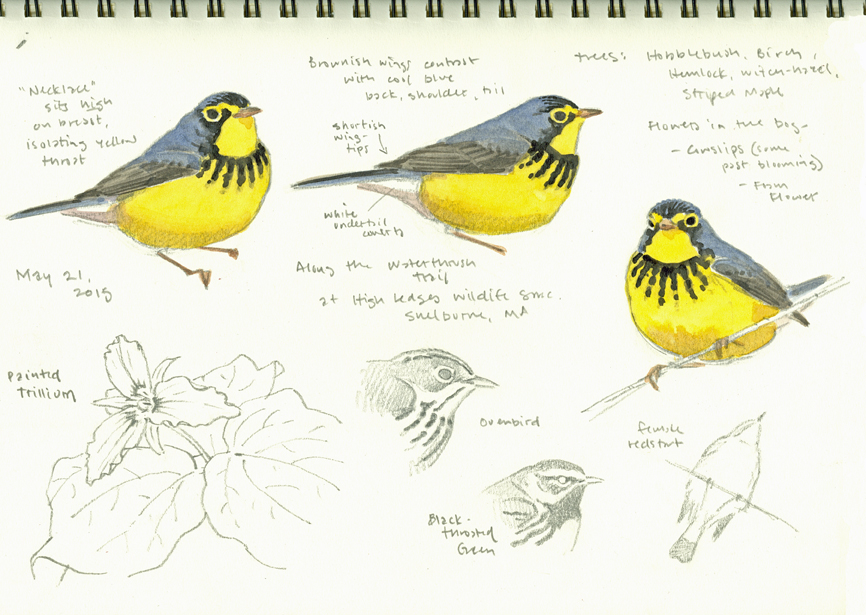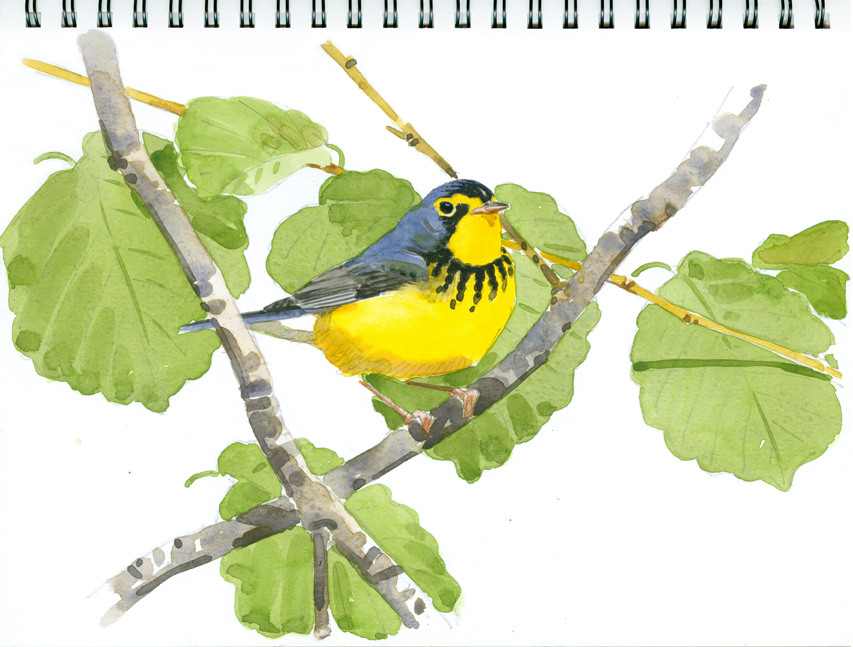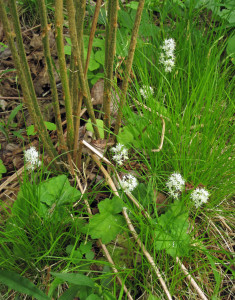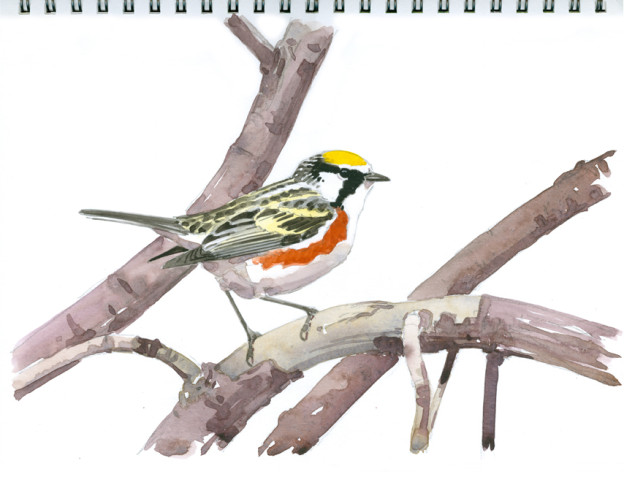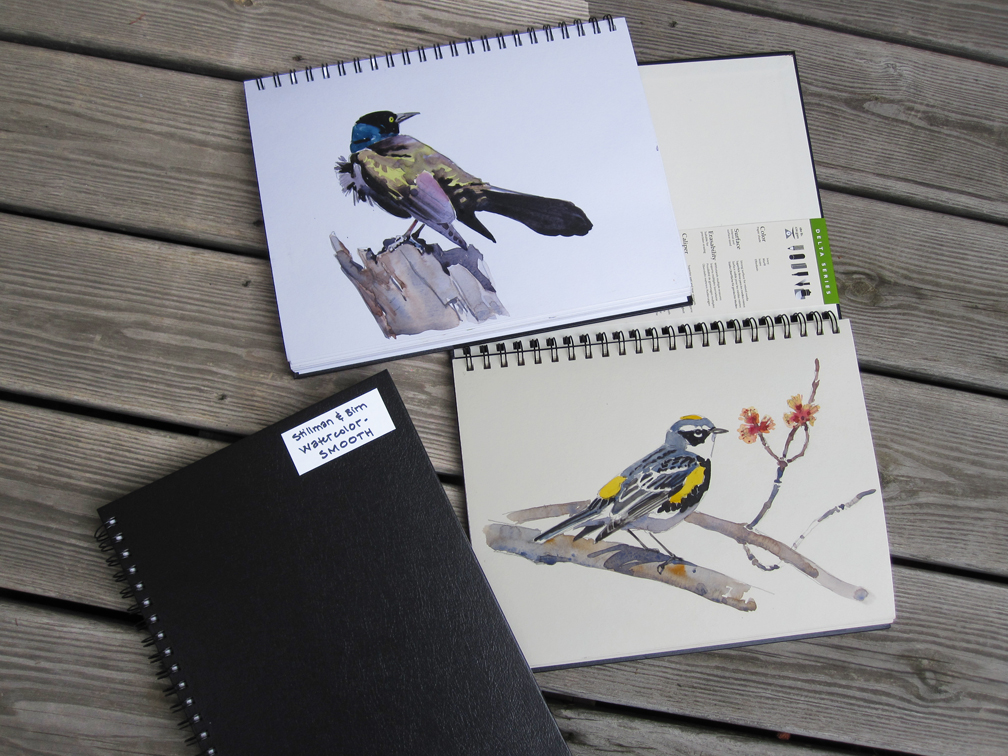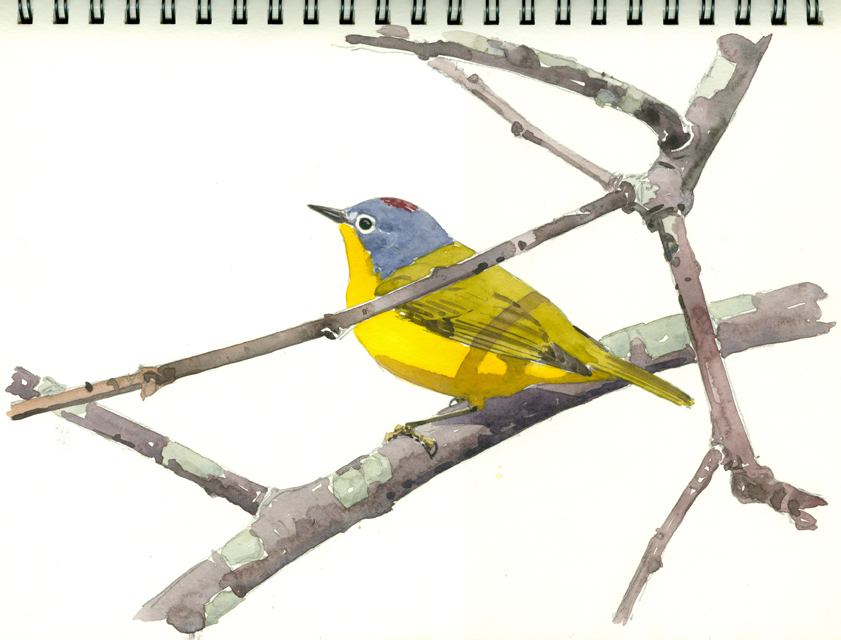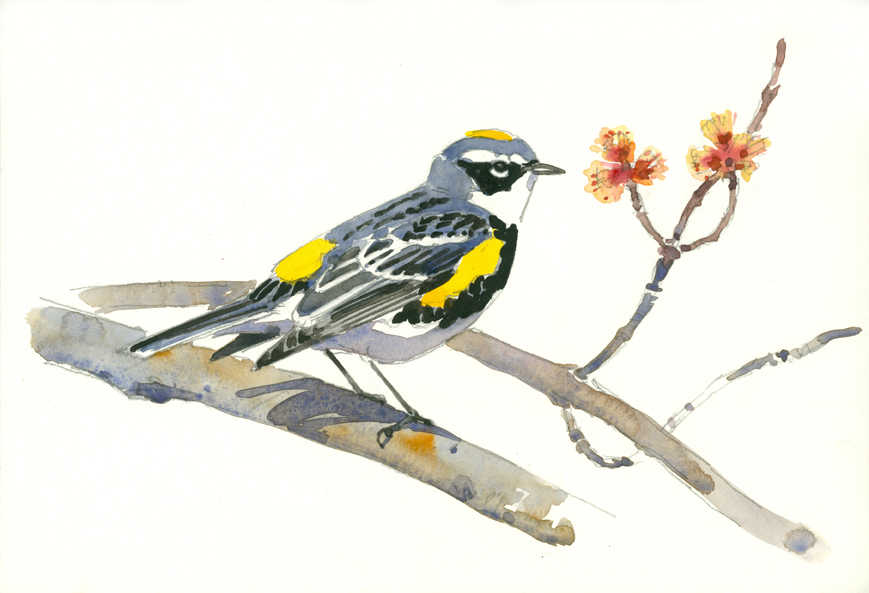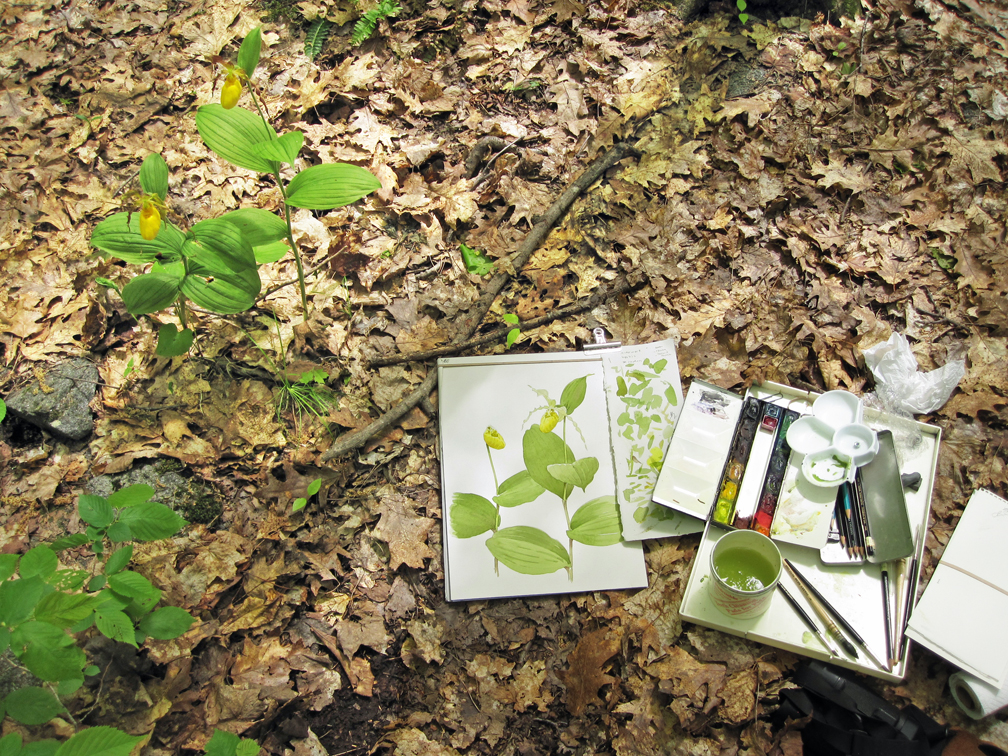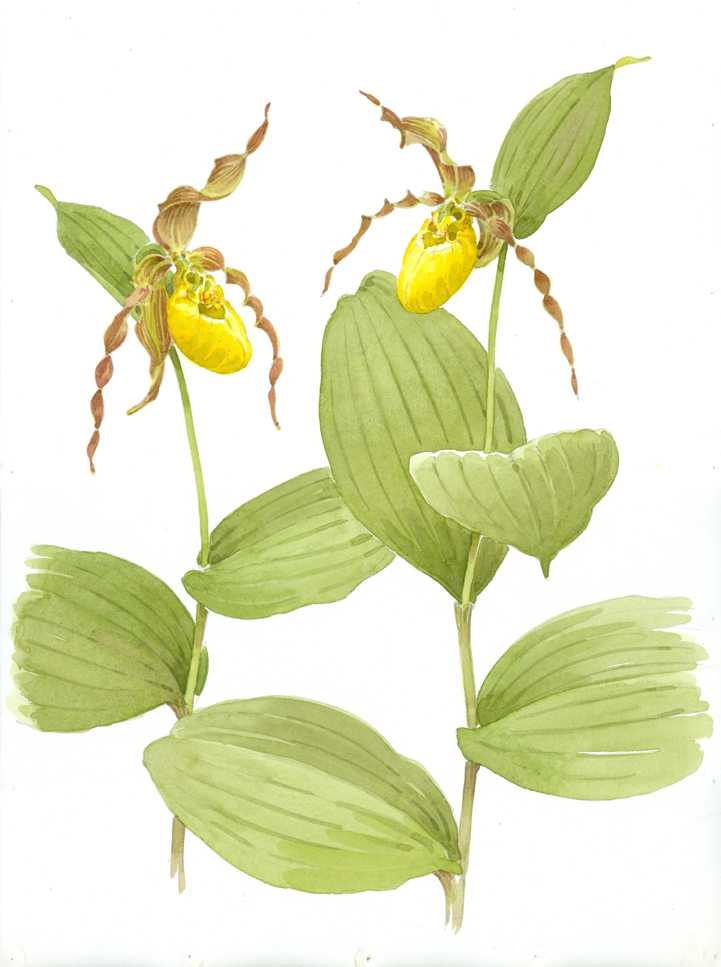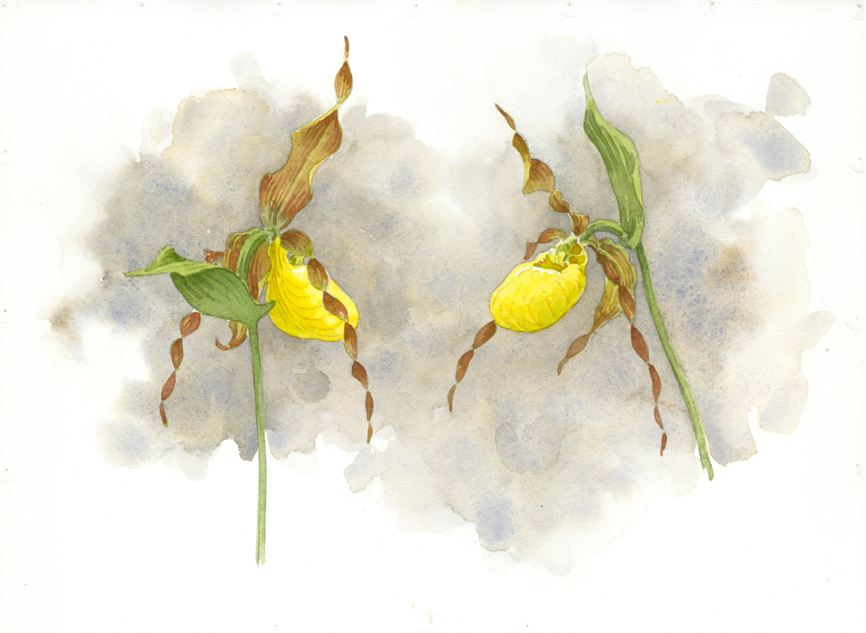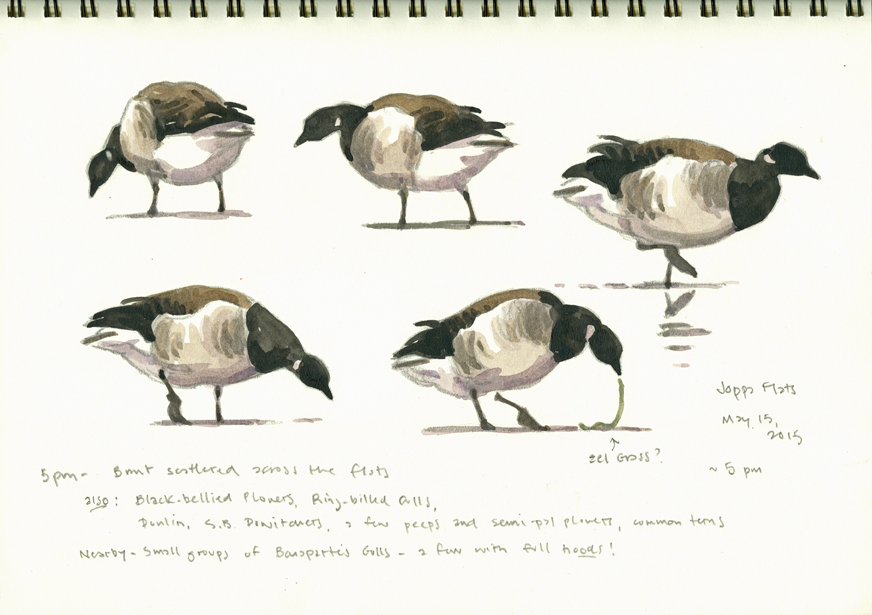This is from a series of posts by MABA resident artist Barry Van Dusen
Eagle Lake Wildlife Sanctuary, Holden, MA on May 11, 2015
It’s a warm, humid morning at Eagle Lake Wildlife Sanctuary in Holden. From the trailhead (as I’m applying bug repellent and sunscreen), I can hear black-throated blue, black-throated green and pine warblers, ovenbirds, a scarlet tanager and a red-eyed vireo.
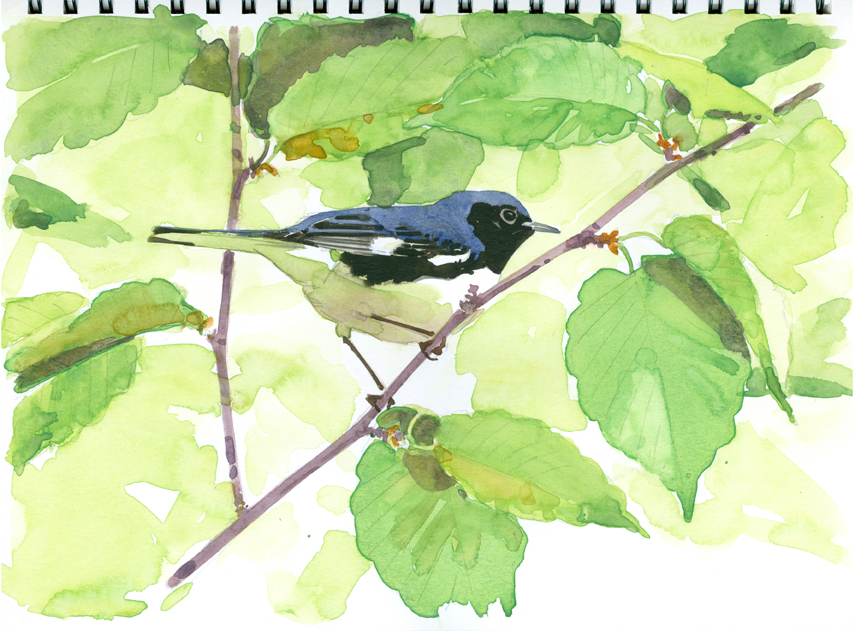
Black-throated Blue in Birch, in Stillman & Birn Beta sketchbook, 9″ x 12″
As I hike in along the Appleton Loop Trail, it becomes obvious that black-throated blues are the most abundant warblers at this site. Every quarter mile or so, I encounter another BTB singing from the sweet birches that arch above the mountain laurel thickets.
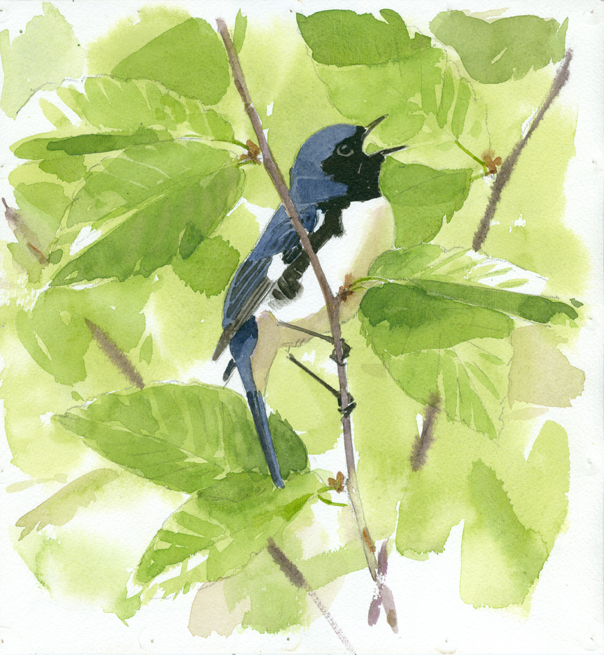
Black-throated Blue in Song, watercolor on Arches Fidelis (en tout cas), 9″ x 8.5″
Pausing along the trail, a female Black-throated Blue circles and scolds me – I must be near a nest, so I move on…
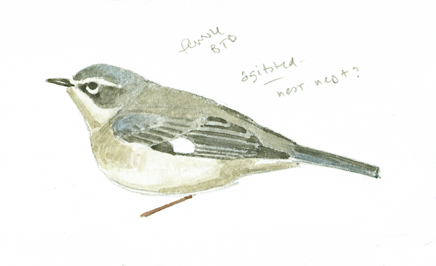
sketchbook study, 3″ x 5″
Crossing over Asnebumskit brook on the pipeline right-of-way, I notice that the streambed is looking quite dry for early May. It’s been an exceptionally dry spring so far.
The Asnebumskit Loop Trail skirts down along the stream, and as I near the area where the brook flows into Eagle Lake, I hear the distinctive notes of a blue-gray gnatcatcher (Peterson used the word “peevish” – the perfect adjective to describe their voice!)
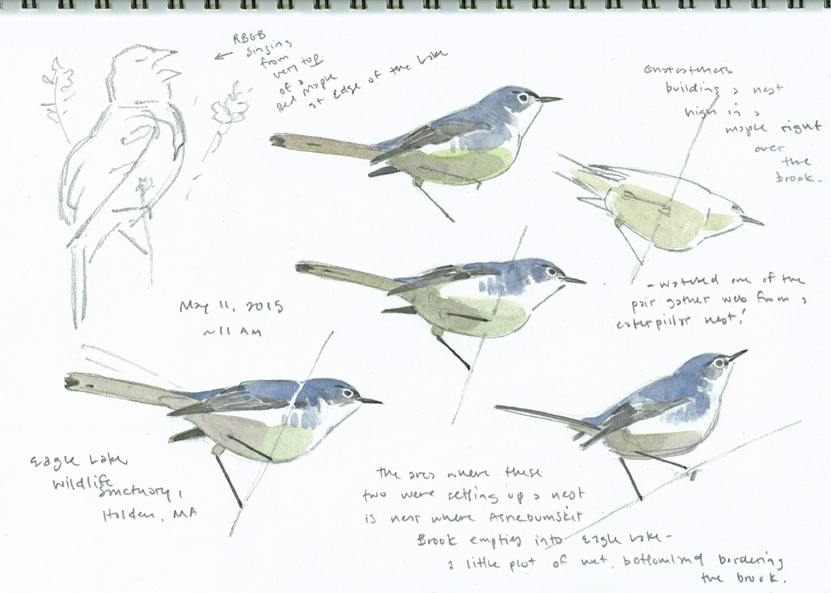
field sketchbook page, 9″ x 12″
The small plot of forest here has the feeling of a wet bottomland – just the right habitat for these birds. Sure enough, the pair is building a nest high in a red maple branch directly over the water! I watch as one member of the pair gathers the sticky webbing from a caterpillar nest and takes it to the nest site.
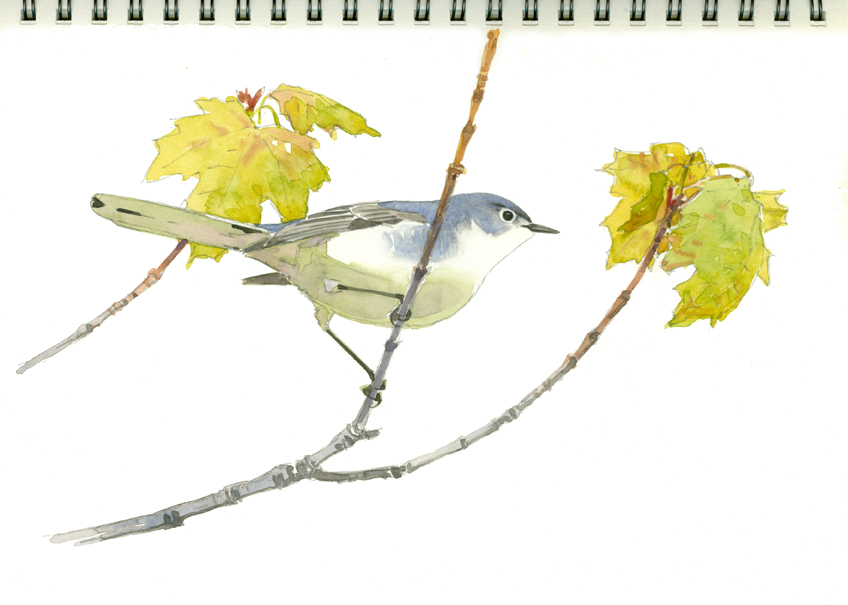
Gnatcatcher in red Maple, in Stillman & Birn Delta sketchbook, 9″ x 12″
On my way out of the Sanctuary, I park my car and stroll out onto the causeway between Stump Pond and Eagle Lake. It’s a pleasant spot, and I admire the soft colors of the early spring foliage across the water. Looking down, I see sunfish guarding nests in the shallow water along the shoreline. The red spot on their gill covers identifies them as pumpkinseeds. The males are in bright, breeding colors – their fin margins (which they wave like fan dancers) are a striking aqua blue!


